Primary intracranial neuroendocrine tumor with ectopic adrenocorticotropic hormone syndrome: A rare and complicated case report and literature review
- Authors:
- Hailong Liu
- Mingshan Zhang
- Xuan Wang
- Yanming Qu
- Hongwei Zhang
- Chunjiang Yu
View Affiliations
Affiliations: Department of Neurosurgery, Sanbo Brain Hospital, Capital Medical University, Beijing 100093, P.R. China
- Published online on: May 11, 2016 https://doi.org/10.3892/mco.2016.904
-
Pages:
99-102
Metrics: Total
Views: 0 (Spandidos Publications: | PMC Statistics: )
Metrics: Total PDF Downloads: 0 (Spandidos Publications: | PMC Statistics: )
This article is mentioned in:
Abstract
Neuroendocrine tumors (NETs) and ectopic adrenocorticotropic hormone (ACTH) syndrome are frequent in adult patients. However, primary intracranial NETs, exhibiting immunonegativity for ACTH, high serum ACTH level and treated with anterior skull base reconstruction, are rare and complicated. We herein present a case of a primary intracranial NET immunonegative for ACTH, resulting in ectopic ACTH syndrome. A 40‑year‑old woman presented with intermittent rhinorrhea, rapid weight gain, polydipsia, polyuria, hypertension, dimness, bilateral exophthalmus, diminution of vision in the left eye and pigmentation of the skin of the face and trunk. Computed tomography (CT) and magnetic resonance imaging scans revealed a sizeable enhancing tumor in the anterior cranial fossa, which infiltrated the sphenoid and ethmoid sinuses bilaterally, the left maxillary sinus and the nasal cavity. Abdominal CT scans revealed bilateral adrenal hyperplasia. The biochemical findings included hypokalemia and high glucose, cortisol, plasma ACTH, 24‑h urinary free cortisol and testosterone levels. The neoplasm was exposed through a right frontal craniotomy, while anterior skull base reconstruction was performed during surgery. The intracranial surgery achieved gross removal of the tumor; however, part of the tumor remained in the nasal cavity. Histopathological examination of the surgical specimen confirmed the diagnosis of a low‑grade small‑cell NET, exhibiting immunonegativity for ACTH. A postoperative abdominal CT scan demonstrated bilateral regression of the adrenal gland hyperplasia and the serum ACTH level returned to normal after 16 days. To the best of our knowledge, there are no previous reports of primary intracranial NETs, immunohistochemically negative for ACTH, resulting in ectopic ACTH syndrome.
View Figures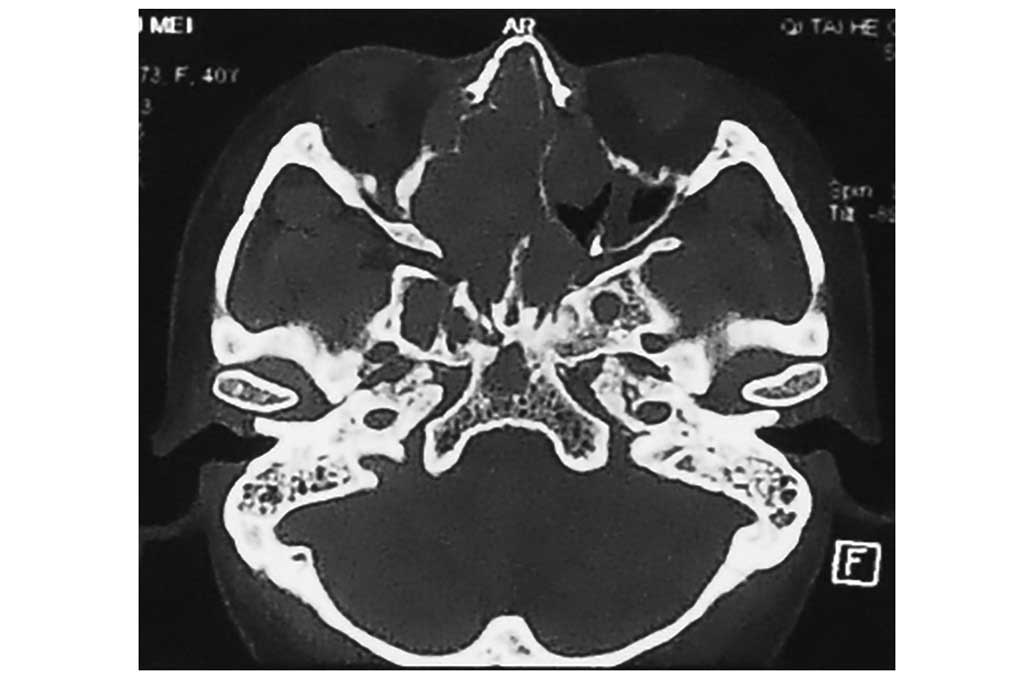 |
Figure 1
|
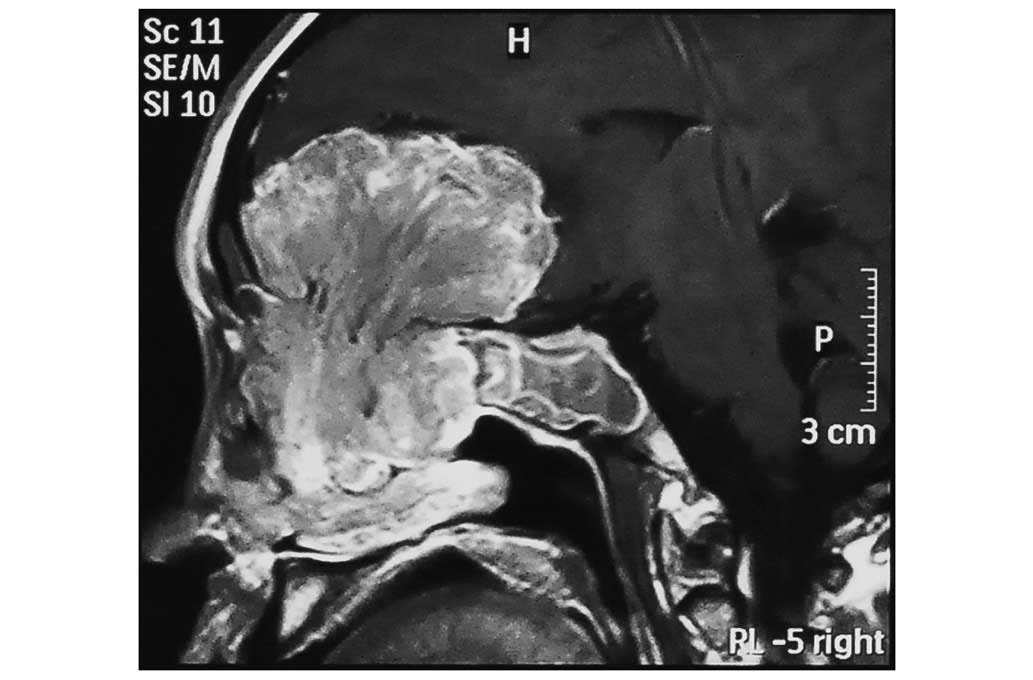 |
Figure 2
|
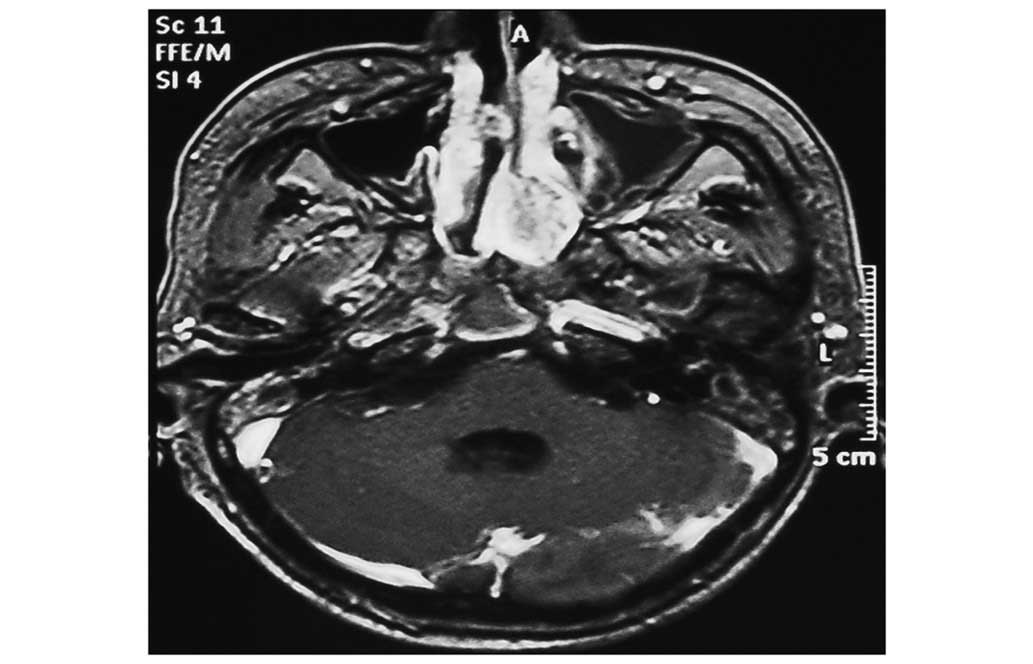 |
Figure 3
|
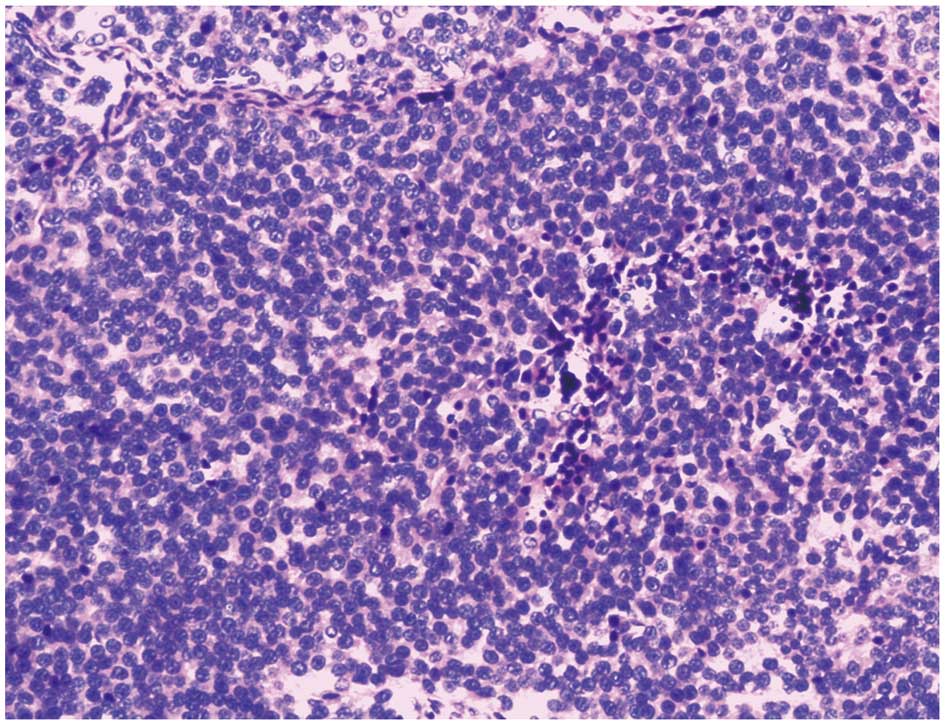 |
Figure 4
|
 |
Figure 5
|
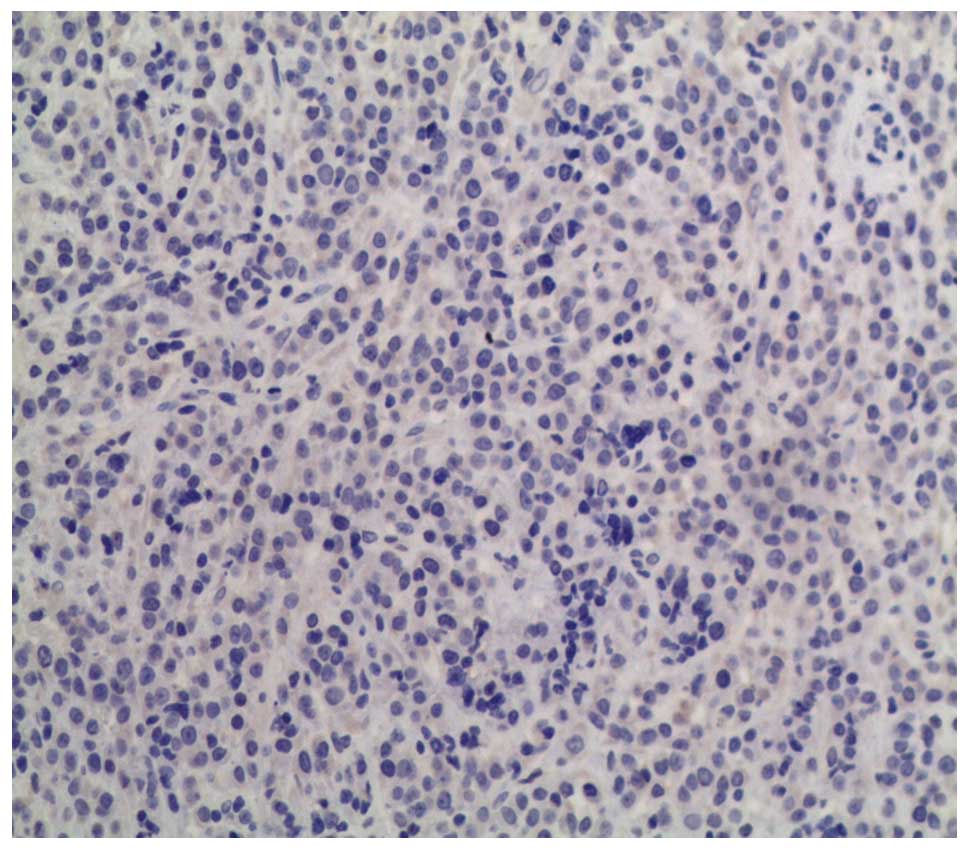 |
Figure 6
|
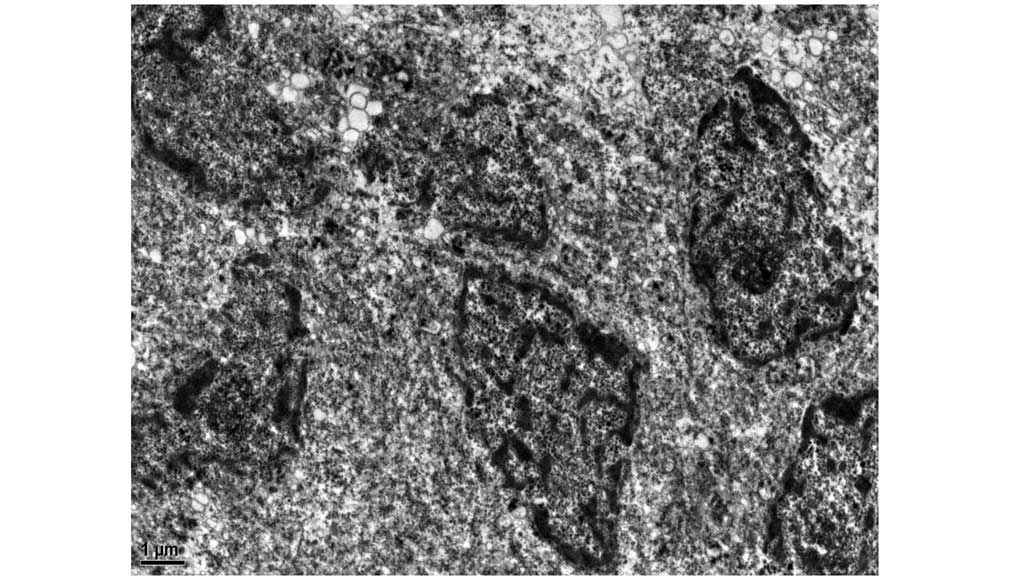 |
Figure 7
|
View References
|
1
|
Godwin JD II: Carcinoid tumors. A analysis
of 2837 cases. Cancer. 36:560–569. 1975. View Article : Google Scholar : PubMed/NCBI
|
|
2
|
Volante M, Rindi G and Papotti M: The grey
zone between pure (neuro)endocrine and non-(neuro)endocrine tumors:
A comment on concepts and classification of mixed
exocrine-endocrine neoplasms. Virchows Arch. 449:499–506. 2006.
View Article : Google Scholar : PubMed/NCBI
|
|
3
|
Shi J, Xu Z, Wang ZD, et al: Pathological
category and diagnosis of neuroendocrine tumor in
non-neuroendocrine system. J Clin Exp Pathol. 25:548–550. 2009.(In
Chinese).
|
|
4
|
Faggiano A, Mansueto G, Ferolla P, Milone
F, del Basso de Caro ML, Lombardi G, Colao A and De Rosa G:
Diagnosis and prognostic implication of the World Health
Organization classification of neuroendocrine tumors. J Endocrinol
Invest. 31:216–223. 2008. View Article : Google Scholar : PubMed/NCBI
|
|
5
|
Lambert SW, Hofland LJ and Nobels FR:
Neuroendocrine tumor markers. Front Neuroendocrinol. 22:309–339.
2001. View Article : Google Scholar : PubMed/NCBI
|
|
6
|
Klimstra DS: Pathology reporting of
neuroendocrine tumors: Essential elements for accurate diagnosis,
classification and staging. Semin Oncol. 40:23–36. 2013. View Article : Google Scholar : PubMed/NCBI
|
|
7
|
Travis WD, Rush W, Flieder DB, Falk R,
Fleming MV, Gal AA and Koss MN: Survival analysis of 200 pulmonary
neuroendocrine tumors with classification of criteria for atypical
carcinoid and its separation from typical carcinoid. Am J Surg
Pathol. 22:934–944. 1998. View Article : Google Scholar : PubMed/NCBI
|
|
8
|
Hochwald SN, Zee S, Conlon KC, Colleoni R,
Louie O, Brennan MF and Klimstra DS: Prognostic factors in
pancreatic endocrine neoplasms: An analysis of 136 cases with a
proposal for low-grade and intermediate-grade groups. J Clin Oncol.
20:2633–2642. 2002. View Article : Google Scholar : PubMed/NCBI
|
|
9
|
Smith EM, Galin FS, LeBoeuf RD,
Coppenhaver DH, Harbour DV and Blalock JE: Nucleotide and amino
acid sequence of lymphocyte-derived corticotropin: Endotoxin
induction of a truncated peptide. Pro Natl Sci USA. 87:1057–1064.
1990. View Article : Google Scholar
|
|
10
|
Kolesnikova GS, Lapshina AM, Voronkova IA,
Marova EI, Arapova SD, Goncharov NP and Dedov II: Comparative
analysis of clinical, hormonal and morphological studies in
patients with neuroendocrine ACTH-producing tumors. Int J
Endocrinol. 2013:6592322013. View Article : Google Scholar : PubMed/NCBI
|
|
11
|
Al-Gahtany M, Horvath E and Kovacs K:
Pituitary hyperplasia. Hormones (Athens). 2:149–158. 2003.
View Article : Google Scholar : PubMed/NCBI
|
|
12
|
Liu H, Zhang Q and Yang Z: Skull base
reconstruction and rehabilitation. J Clin Otorhinolaryngol.
18:755–757. 2003.(In Chinese).
|
















